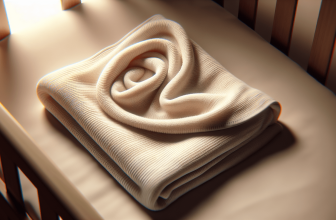As the scorching summer heat approaches, it is crucial to ensure the safety and well-being of your little one. In this article, we will provide you with invaluable tips on how to protect your infant from both the heat and harmful sunrays. From proper clothing choices to staying hydrated, these essential guidelines will equip you with the knowledge needed to keep your baby comfortable and safe during the summer months. So, let’s get started on this journey towards a worry-free and enjoyable summer with your baby.
This image is property of images.unsplash.com.
Choosing the Right Clothing
Lightweight and Breathable Fabrics
When it comes to choosing clothing for your baby during the summer months, it’s important to opt for lightweight and breathable fabrics. Fabrics like cotton and linen are excellent choices as they allow air to circulate and prevent your baby from feeling too hot and uncomfortable. Avoid synthetic materials, as they tend to trap heat, making your little one feel sweaty and sticky.
Long Sleeves and Hats
Contrary to popular belief, long sleeves can actually help protect your baby’s delicate skin from the sun’s harmful rays. Look for lightweight, loose-fitting tops with long sleeves to shield their arms and shoulders. Additionally, don’t forget to invest in a wide-brimmed hat that covers their face, neck, and ears. Hats with a chin strap can be particularly helpful in keeping the hat securely in place, even on windy days.
Consider UV-Protective Clothing
If you want to take sun protection to the next level, consider purchasing UV-protective clothing for your baby. These specially designed garments offer a high level of UPF (Ultraviolet Protection Factor) and can block out a significant amount of the sun’s harmful UV rays. UV-protective clothing is available in various styles, including onesies, swimsuits, and hats, ensuring your baby’s entire body is protected.
Protecting from Sunburn
Avoid Midday Sun
The sun’s rays are at their strongest during the peak hours of the day, typically from 10 am to 4 pm. During this time, it’s best to avoid prolonged exposure to the sun as it increases the risk of sunburn and heat-related illnesses. Instead, plan outdoor activities in the morning or late afternoon when the sun is less intense. If you do need to be outside during the midday sun, seek shade as much as possible.
Apply Sunscreen
Applying sunscreen to your baby is an essential part of sun protection. Choose a sunscreen specifically formulated for infants with a minimum SPF (Sun Protection Factor) of 30 or higher. Apply a generous amount to all exposed areas of your baby’s skin, including the face, arms, and legs. Reapply sunscreen every two hours or more frequently if your baby has been swimming or sweating.
Use a Sunshade or Umbrella
When you’re out and about with your baby, it’s important to create a shaded area where they can rest and play comfortably. Use a stroller with a built-in sunshade or attach a removable sunshade or umbrella to your baby’s stroller. This provides extra protection from the sun’s rays, keeping your little one cool and safe while you’re on the go.
Staying Hydrated
Breastfeed or Bottle-feed Frequently
One of the simplest ways to ensure your baby stays hydrated during the summer months is to breastfeed or bottle-feed them frequently. Breast milk and formula provide the necessary fluids to keep your baby hydrated and can be offered more frequently to compensate for any additional fluid loss due to sweating.
Offer Water in Small Amounts
If your baby is over six months old and has started solid foods, you can also offer them small amounts of water throughout the day. It’s essential to offer water in small quantities to avoid overhydration, as babies have different fluid requirements than adults. Use a sippy cup or a bottle with a soft spout to make it easier for them to drink.
Avoid Overdressing
While it’s natural to want to dress your baby in cute outfits, it’s important to avoid overdoing it during hot summer days. Overdressing your baby can lead to overheating, which can be dangerous. Instead, opt for loose-fitting, lightweight clothing that allows airflow and keeps your baby cool. Keep an eye out for signs of overheating, such as flushed skin, rapid breathing, or excessive sweating, and adjust their clothing accordingly.
Keeping the Environment Cool
Use Fans or Air Conditioning
Keeping the environment cool is crucial for your baby’s comfort and safety. Make sure your home is equipped with fans or air conditioning to maintain a comfortable temperature. Set the temperature at a level that is neither too hot nor too cold for your baby’s well-being. Running a fan or air conditioner can help circulate the air and prevent overheating.
Create a Shaded Outdoor Area
If you enjoy spending time outdoors with your baby, creating a shaded area is essential. Set up a canopy or an umbrella in the backyard or at the park to provide protection from direct sunlight. It’s important to remember that even in the shade, the sun’s rays can still reach your baby, so take additional sun protection measures, such as using sunscreen and dressing your baby in lightweight, protective clothing.
Avoid Plastic and Vinyl Materials
When it comes to choosing baby products, it’s best to avoid those made of plastic or vinyl materials. These materials tend to trap heat and can quickly become uncomfortably hot for your little one. Instead, opt for items made of natural materials like cotton or bamboo, which are breathable and help regulate temperature.
This image is property of images.unsplash.com.
Safe Outdoor Activities
Plan Activities during Cooler Times
Planning outdoor activities during the cooler parts of the day is an effective way to minimize your baby’s exposure to the sun and heat. Schedule outings in the early morning or late afternoon when the temperatures are lower and the sun is less intense. This way, you can enjoy outdoor time together without putting your baby at risk of overheating or sunburn.
Provide a Portable Shade
When you’re out and about, it may not always be possible to find natural shade. That’s where a portable shade or pop-up tent comes in handy. These convenient accessories can be easily carried and set up wherever you go, providing instant shade for your baby. Look for options that offer UPF protection for added sun safety.
Avoid Overexertion
It’s important to remember that babies are more susceptible to heat-related illnesses than adults. Therefore, it’s crucial to avoid overexerting your baby during outdoor activities. Keep playtime gentle and provide frequent breaks in shaded areas to ensure your baby doesn’t become overheated or develop any health complications.
Preventing Heat-related Illnesses
Recognize the Signs of Heat Exhaustion
Heat exhaustion can occur when your baby’s body temperature rises, and they are unable to cool down efficiently. Look out for signs such as excessive sweating, pale or clammy skin, dizziness, or irritability. If you suspect your baby is experiencing heat exhaustion, take them to a cool, shaded area, offer fluids, and seek medical attention if symptoms persist.
Take Immediate Action for Heatstroke
Heatstroke is a severe medical condition that requires immediate attention. It can be life-threatening if left untreated. Symptoms of heatstroke in babies include a high body temperature (above 103°F or 39.4°C), rapid breathing, dry or hot skin, vomiting, or seizures. If you suspect your baby is experiencing heatstroke, call emergency services right away and take steps to cool them down while waiting for medical help.
Consult a Doctor if Concerned
If you have any concerns about how your baby is handling the summer heat, it’s always best to consult with their pediatrician. They can provide personalized advice based on your baby’s age, health, and any specific concerns you may have. Your baby’s doctor can help ensure you’re taking all the necessary steps to keep your little one safe and comfortable during the summer months.
This image is property of images.unsplash.com.
Sun Safety in the Car
Use Sunshades on Windows
While sunscreen and protective clothing are crucial when you’re out of the house, it’s equally important to protect your baby from the sun’s rays while in the car. Use sunshades on the windows, particularly those near your baby’s car seat, to minimize their exposure to direct sunlight. Sunshades can effectively block out a significant amount of harmful UV rays and help keep your baby cool.
Keep the Car Cool
Before entering the car, it’s essential to ensure that the temperature inside is cool and comfortable for your baby. Crank up the air conditioning or open the windows to ventilate the hot air before strapping your baby into their car seat. This will help prevent your baby from becoming overheated while on the road.
Check the Car Seat Temperature
When it’s hot outside, car seats can become dangerously hot. Before placing your baby in their car seat, check the temperature of the seat surface by briefly placing the back of your hand on it. If it feels too hot for your hand, take measures to cool down the seat before your baby sits in it. This can be done by shading the seat or using a cool towel or seat cover.
Choosing the Right Sun Hat
Wide-Brimmed Hats
A wide-brimmed hat is an excellent choice for protecting your baby’s face, neck, and ears from the sun. Look for hats with a brim that extends all the way around, providing maximum coverage. Wide-brimmed hats can help shield your baby from potentially harmful UV rays while still allowing them to enjoy the outdoors.
Breathable Materials
Choosing a sun hat made from breathable materials is essential to ensure your baby stays cool and comfortable. Natural fibers like cotton or linen are ideal choices as they allow air circulation, minimizing the risk of overheating. Avoid hats made from synthetic materials that can trap heat and cause discomfort.
Secure and Adjustable
Babies are known for their wiggly movements, so it’s important to choose a sun hat that is secure and adjustable. Look for hats with chin straps or ties that can be fastened under your baby’s chin to ensure the hat stays in place. Adjustable hats with snap or hook-and-loop closures are also great options as they can be customized to your baby’s head size, providing a snug fit.
Protecting Baby’s Eyes
Use Sunglasses
Just like adults, babies need protection for their eyes too. Opt for sunglasses specifically designed for infants, as these are lightweight, durable, and have a soft frame that won’t irritate your baby’s delicate skin. Sunglasses with UV protection are vital to shield your baby’s eyes from the sun’s harmful rays. Encourage your baby to wear sunglasses by starting early and being consistent.
Look for UV Protection
When selecting sunglasses for your baby, make sure they offer sufficient UV protection. Look for sunglasses that block 100% of both UVA and UVB rays. This information is usually indicated on the label. By choosing sunglasses with proper UV protection, you can help prevent long-term damage to your baby’s eyes and reduce the risk of eye-related conditions.
Ensure a Comfortable Fit
Comfort is key when it comes to your baby wearing sunglasses. Look for sunglasses with a soft, flexible frame that won’t pinch or dig into your baby’s skin. Adjustable straps or bands can help ensure a secure and comfortable fit. It may take some time for your baby to get used to wearing sunglasses, so be patient and persistent in encouraging them to wear them.
Precautions for Baby’s Stroller
Use a Sunshade or Canopy
When your baby is in their stroller, it’s important to provide them with protection from the sun. Many strollers come with built-in sunshades or canopies, but if yours doesn’t have one, consider purchasing a removable sunshade. These shades can be easily attached to the stroller, providing a shaded area for your baby while still allowing airflow.
Check for Optimal Airflow
Proper airflow is essential when your baby is in their stroller, as it helps regulate their body temperature and prevent overheating. Make sure the stroller’s seat and backrest are made of breathable materials and have mesh panels for improved ventilation. Avoid covering the stroller with heavy blankets or materials that may restrict airflow.
Avoid Direct Sun Exposure
Direct sun exposure can quickly heat up your baby’s stroller, making them uncomfortable and at risk of overheating. Whenever possible, keep your baby’s stroller in a shaded area or create shade using a canopy or sunshade. If you need to place the stroller in direct sunlight, consider attaching a lightweight blanket or cloth to the stroller’s shade to provide additional sun protection.











